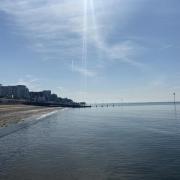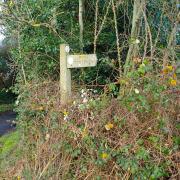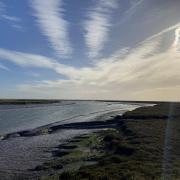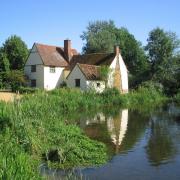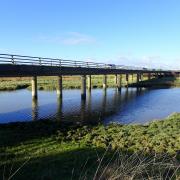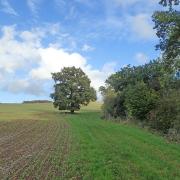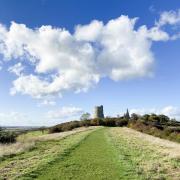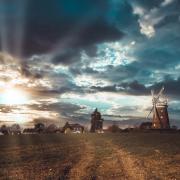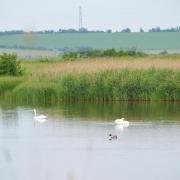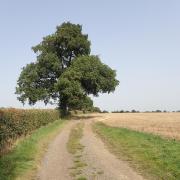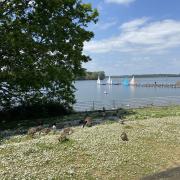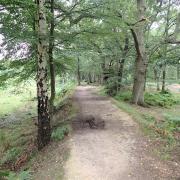Laurie Page of the Public Rights of Way Team at Essex County Council shares with us this beautiful six-mile walk around Bradwell’s stunning coastal delights

Ordnance Survey maps are available from all good booksellers and outdoor stores or visit the online shop
1) This is a popular and well-known Essex walk. It is a straight forward route which has the advantage of not only easy walking but also some interesting features along the way, as well as the famous chapel. There are no steep hills or stiles to negotiate. If it is out of season, watch out for a keen easterly wind that can keep the temperature down, as this is a very exposed coastline. But if it is warm enough, just sit on one of the many World War II pill boxes that line the route and enjoy the peace and quiet.
Walk through the gate at the end of the dirt track. Follow the footpath to the chapel, which you will see straight ahead of you. Continue past the other side of the chapel down to the shoreline (the marsh area of the nature reserve is in front of you) and at the T-junction of footpaths turn left passing the watchtower and follow the footpath along the sea wall.

2) To the right is the marshy nature reserve which is soon replaced by the Blackwater estuary. By a little beach the grass footpath is replaced by a concrete walkway, making progress easier. This reverts back to grass, but continue to follow the winding sea wall path all the way for about two miles.
Enjoy the tranquil setting and the views of West Mersea on the opposite shore and the estuary with its little sailing boats. As the walk continues, the remaining buildings of the power station can be seen to the left. Pass the power station on the sea wall and before the path swings round to the left in a large arc, you will see steps down to a wide grass track on the left.

3) Take this path, leading towards a large World War II pill box in the field. Pass the pill box, which is on the right, and then a few little white bungalows. Go through the gate and up the track, and as the path swings to the left, go straight on, following the footpath arrows between two hedgerows.
This runs parallel with the road and in wet weather the walker can use the road. At the end of this little path turn left to join the road that served the power station. Turn right onto the road and continue past the playing fields. On your left is the impressive war memorial to the 121 members of the RAF who were killed in action while flying on missions from Bradwell airfield during World War II.
4) Continue round the S bend in the road, passing the red brick houses, and at the road junction follow the sign to Bradwell village. Stay on this road, passing the road called Woodyards and into the little village of Bradwell on Sea. Just past the quaint church of St Thomas (which usually stays open and has some interesting guides on the chapel and the village), turn left into East End Road.
Continue all the way down the road (this is where you drove to get to the start) for about a mile, passing the Cricketers Pub, the caravan park and back to Eastlands Farm and the track to the car parking area.
Compass points
Distance: 5.9 miles (9.5 km)
Starting point: Car parking area at the end of East Road.
How to get there: Take B1021 to Bradwell. From the village of Bradwell on Sea, take East End Road. At the end of the road, by East End Farm is a wide unmade track, a no through road.
Map: OS Explorer 176 Blackwater Estuary. Starting map grid reference: 024,078
Refreshment: The Kings Head pub in Bradwell village and The Cricketers Pub in East End Road. Both these are en route.
Places of interest nearby: The ancient Chapel of St Peter on the Wall was built in 674 using the brick of the ruined Roman fort, hence 'on the wall'. Almost nothing like this still survives from this period in England, although one very similar stood on the site of what is now Rochester Cathedral. It is thought to have been used as a church up until the parish church of St Thomas of Bradwell was built in the 14th century, by which time it became a chapel-of-ease. But some time later it was turned into a barn and used for farming purposes.
________________




